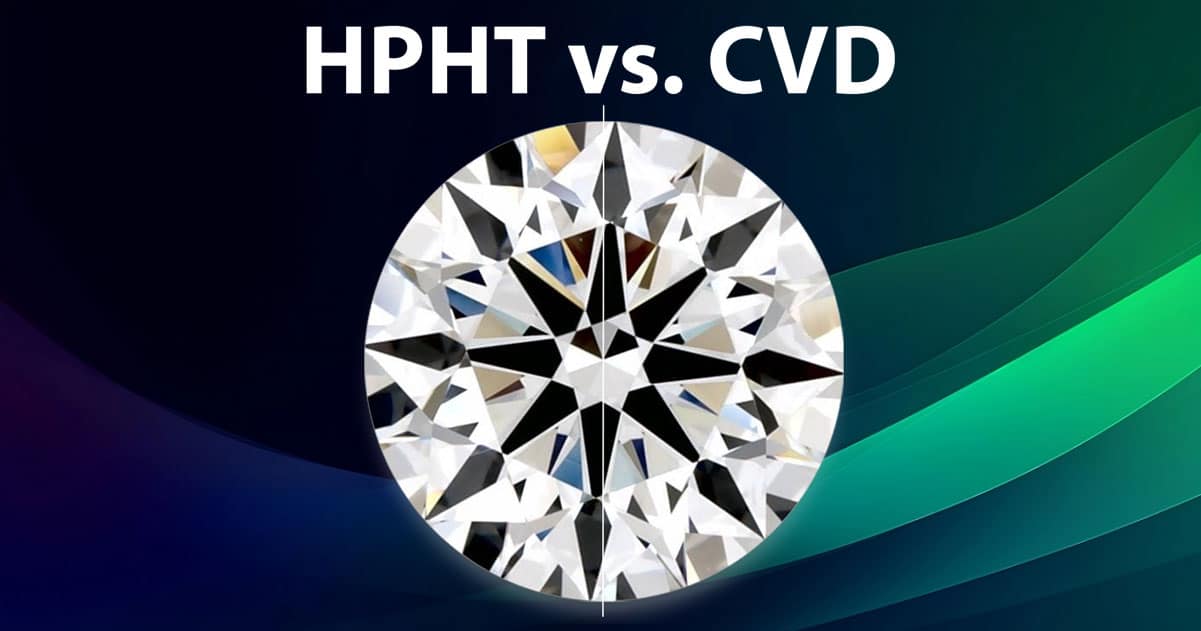Diamonds, the epitome of luxury and elegance, have undergone significant transformations in their production methods. In recent years, two innovative techniques have revolutionized the diamond industry: High-Pressure High-Temperature (HPHT) and Chemical Vapor Deposition (CVD). But what sets them apart? Let’s delve into the depths of these diamond-growing processes to uncover the disparities and similarities between HPHT and CVD diamonds.
Table of Contents
Introduction
Diamonds, once exclusively formed deep within the Earth’s mantle over millions of years, can now be created in a laboratory setting through HPHT and CVD methods. Understanding these methods is crucial for consumers and enthusiasts alike to make informed decisions when purchasing diamonds.
What is HPHT?
HPHT, or High-Pressure High-Temperature, is a method that replicates the natural conditions required for diamond formation. In this process, carbon is subjected to extreme pressure and temperature, mimicking the environment found deep within the Earth’s mantle. The result? Crystallized carbon atoms form into diamonds. HPHT diamonds boast exceptional clarity and are often indistinguishable from their natural counterparts.
What is CVD?
CVD, or Chemical Vapor Deposition, involves a different approach. Carbon atoms are deposited onto a substrate, such as a diamond seed, under low pressure and high temperature in a controlled environment. Through a chemical reaction, these atoms form a diamond layer, gradually growing into a fully-fledged diamond. CVD diamonds are renowned for their purity and can exhibit exceptional color and clarity.
Quality Comparison
When it comes to quality, both HPHT VS CVD diamonds have their unique characteristics.
Clarity
HPHT diamonds typically have fewer inclusions due to the controlled conditions during their formation. On the other hand, while CVD diamonds can achieve remarkable clarity, they may exhibit small inclusions or irregularities caused by the deposition process.
Color
CVD diamonds are celebrated for their ability to produce fancy colored diamonds, including vibrant yellows and blues. HPHT diamonds, while also capable of producing colored diamonds, may require additional treatments to achieve desired hues.
Durability
In terms of durability, both types of diamonds are equally robust and suitable for everyday wear. Their chemical composition ensures resistance to scratches and abrasions, making them ideal for jewelry settings.
Price Comparison
Factors such as clarity, color, and size influence the pricing of both HPHT VS CVD diamonds. However, due to differences in production costs and market demand, CVD diamonds are often more affordable than their HPHT counterparts.
Environmental Impact
As sustainability becomes increasingly important, the environmental impact of diamond production cannot be ignored. While both HPHT VS CVD methods offer more ethical alternatives to traditional mining, concerns regarding energy consumption and waste management persist. Efforts are underway to mitigate these issues and improve the eco-friendliness of diamond synthesis.
Applications
The versatility of lab-grown diamonds extends beyond the realm of jewelry. Both HPHT VS CVD diamonds find applications in various industries, including electronics, cutting tools, and scientific research. Their uniformity and purity make them invaluable in precision instruments and high-tech applications.
Popularity and Market Share
In recent years, the demand for lab-grown diamonds has surged, driven by ethical considerations and technological advancements. While HPHT diamonds have long been established in the market, CVD diamonds are rapidly gaining traction, challenging traditional norms and capturing a significant share of the diamond industry.
Consumer Considerations
For consumers, navigating the world of lab diamonds can be overwhelming. Factors such as certification, origin, and personal preferences play a crucial role in decision-making. Consulting with reputable jewelers and educating oneself about the differences between HPHT and CVD diamonds can help ensure a satisfying purchase experience.
Future Outlook
As technology continues to evolve, the future of diamond production looks promising. Innovations in both HPHT VS CVD methods are expected to enhance efficiency, reduce costs, and further minimize environmental impact. Lab-grown diamonds are poised to become a mainstream choice for consumers seeking ethical, sustainable, and high-quality alternatives to mined diamonds.
Conclusion
In the realm of diamonds, HPHT VS CVD represent groundbreaking advancements that have reshaped the industry landscape. While each method offers distinct advantages, their ultimate goal remains the same: to provide consumers with exquisite diamonds that are ethical, sustainable, and of unparalleled quality.

